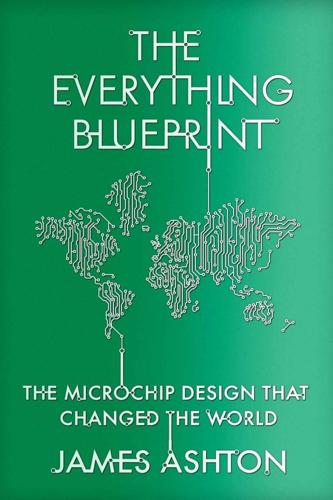
The Everything Blueprint: The Microchip Design That Changed the World
by
James Ashton
Published 11 May 2023
Founded in 2000 by Richard Chang, a Taiwanese expatriate with years of experience from Texas Instruments and TSMC (and not thought to be related to Morris), its creation was not without bad blood. Chang took 180 staff with him from TSMC when he set up in Shanghai. Suspicions arose that it was stealing more than just TSMC’s people, because SMIC was ready for business astonishingly fast. A US lawsuit lodged in 2003 was designed to make US customers take fright. Allegations of furtive photocopying and email exchanges led to an eventual settlement where SMIC would pay $175m to TSMC over six years. But a second lawsuit was filed when SMIC reportedly did not hand back stolen documents and carried on compiling more information.
…
The white-haired founder of Taiwan Semiconductor Manufacturing Company (TSMC), Taiwan’s largest and most important company, was actually born in July, but the Covid-19 outbreak prevented celebrations until this moment. Chang had retired from TSMC in 2018 but his impact on the company and the nation had not diminished. And even without him at the helm, TSMC could celebrate its own prosperity and longevity with some confidence. Over the years, everything had got bigger – except the process technology with which the company produced chips. Building a new fab typically cost $20bn – 10 times the bill from a generation ago. But TSMC had the means to afford the relentless investment.
…
All of this explained why Pelosi, alongside the Taiwanese President, Tsai Ing-wen, found time to sit down for lunch with Mark Liu, the chairman of Taiwan Semiconductor Manufacturing Company (TSMC), and its talismanic founder, Morris Chang. TSMC was the world’s largest contract chipmaker, making chips to the specification of its customers but not designing its own. In 2021 it manufactured 12,302 different products using 291 distinct technologies for 535 different buyers. Its largest customer was widely thought to be Apple, which accounted for roughly one-quarter of TSMC’s output for its iPhones, iPads and watches, but it also served a who’s who of the industry – Qualcomm, Nvidia, NXP, Advanced Micro Devices (AMD), Intel – all of which supplied chips to numerous market ends.
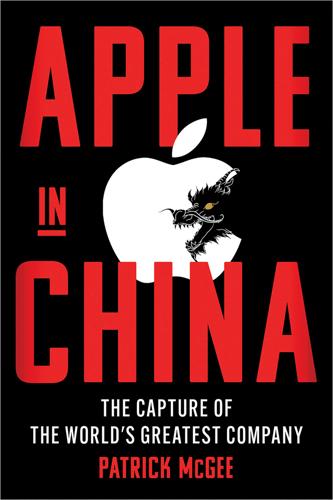
Apple in China: The Capture of the World's Greatest Company
by
Patrick McGee
Published 13 May 2025
Annual iPhone shipments nearly quadrupled to 93 million between 2009 and 2011, while the first iPad was so successful some pundits wondered if it would eventually outsell the iPhone. The business logic of the deal was unimpeachable. It really only had one downside: The production of Apple’s two most important products was now even more firmly fastened in China. TSMC Another company made a fateful gamble on Apple around the same time: Taiwan Semiconductor Manufacturing Company, or TSMC. Like other companies dealt a blow by the financial crisis, TSMC initially reacted by cutting staff. When workers protested, the famed founder and chairman of the company, Morris Chang, retook the reins. The seventy-seven-year-old had retired in 2005, but after the initial success of the iPhone, he leapt on an historic chance to win Apple’s business.
…
In 2010, Apple operations chief Jeff Williams reached out to Morris Chang through his wife, Sophie Chang, a relative of Terry Gou. Dinner between them launched months of “intense” negotiations, according to Chang, as Williams pressed TSMC on prices and convinced the Taiwanese group to make a major investment. “The risk was very substantial,” Williams recalled at a gathering for TSMC’s thirtieth anniversary in 2017. “If we were to bet heavily on TSMC, there would be no backup plan. You cannot double-plan the kind of volumes that we do. We want leading-edge technology, but we want it at established technology… volumes.” Williams’s narrative leaves out some of the most interesting facts about the early partnership.
…
The partial commitment forced Apple to toggle between Samsung and TSMC, which some in Cupertino saw as a plus—it meant that Apple wasn’t beholden to just one supplier for what serves as the brain within the iPhone. But Srouji’s team found it nightmarish to manage both suppliers. So Apple turned to TSMC on an exclusive basis, establishing over-the-top contract terms to protect itself. A person familiar with the contract characterized it as saying: “We need to make sure that you’re gonna go out of business—if you’re gonna put us at risk of going out of business.” It was a “mutually assured destruction” type of situation, this person says, because if TSMC didn’t perform in any given year, there’d be no iPhone.

The Thinking Machine: Jensen Huang, Nvidia, and the World's Most Coveted Microchip
by
Stephen Witt
Published 8 Apr 2025
The world’s best independent chip manufacturer, by unanimous consensus, was the Taiwan Semiconductor Manufacturing Corporation, whose massive complex in Tainan fabricated a significant portion of the world’s silicon. TSMC didn’t design its own chips; it simply manufactured chips for merchants like Nvidia. The rise of such independent “foundry” services was responsible for a surge in computing innovation, permitting upstarts to experiment with radical designs. TSMC filled orders with incomparable precision and efficiency, the product of an extraordinarily demanding work culture. Workers there described the hierarchical corporate structure as “militarized,” and they followed a “996” shift schedule, working from nine a.m. to nine p.m. six days a week. Huang had repeatedly failed to get TSMC’s attention.
…
Chang, retired and out of the decision loop, saw the Arizona investment as foolish—he believed that US work culture would never match the productivity of Asia and that the facility would lag global rivals. (When Nancy Pelosi visited Taiwan in 2022, Chang told her the US projects were “doomed to fail.”) Chang also argued that TSMC’s concentration in Taiwan was actually preventing a Chinese invasion, for no national economy would suffer as much as China’s if TSMC went offline. (He called this Taiwan’s “silicon shield.”) Still, when his favorite customer, Jensen Huang, toured the TSMC construction site in Phoenix in 2023, Chang was there to greet him with a smile. China had nothing to compare. The US government had successfully lobbied to block the export of the advanced light-printing machines that were the most critical component of the fabrication process, leaving China a decade behind.
…
Management consultant Jane Hyun has termed this phenomenon the “bamboo ceiling.”) When I asked Huang about the bamboo ceiling, he seemed dismissive—I got the sense that identity politics were not his thing. “I’m the only Chinese CEO of the time,” he said, “but it never occurred to me. And it doesn’t occur to me today.” TSMC was key to Nvidia’s long-term success, but the relationship got off to a difficult start. In early 1998, TSMC misapplied a chemical process at the end of the manufacturing process, introducing short circuits onto many of the chips. The mistake nearly ruined Nvidia, which had invested most of its working capital in the production run. More than half the chips needed to be discarded—Nvidia managed to save itself only by selling equity to some of its circuit-board partners.
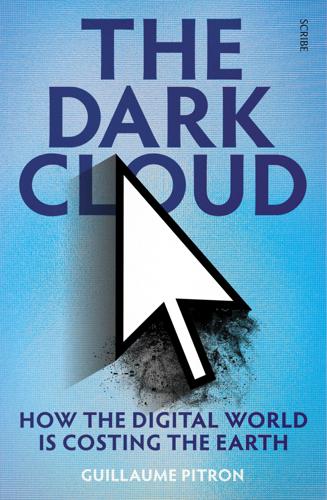
The Dark Cloud: How the Digital World Is Costing the Earth
by
Guillaume Pitron
Published 14 Jun 2023
‘The advertising boasting the increasingly high performance of their electronic products speaks for itself’, says Colinge. Enslaved to the technical specifications of its clients, companies such as TSMC are doomed to multiply its technological prowess in record time. Soon, patterning transistors of five to seven nanometres will not be enough to stay in the game, with TSMC having already committed to lowering the count to three nanometres, or even one nanometre. In these conditions, ‘Never has the company’s energy consumption been this concerning’, says the former TSMC engineer.30 So it comes as no surprise that the total amount of fuel burned is hundreds of times higher than the final weight of the integrated circuit.
…
In recent years, it has also had to contend with myriad accusations of pollution, because ‘the microprocessor industry releases liquid, solid, and gaseous waste’ into the environment, says a Taiwanese chemist.34 The exact figures are hard to come by, but producing one kilogram of silicon purportedly generates some 280 kilograms of chemicals.35 Not all the waste is treated, and since 2013 several of TSMC’s subcontractors, including the electronics groups ASE Korea and Nerca, have had to suspend their operations after spilling toxic substances into nearby rivers.36 Colinge further explains that ‘because integrated circuits need to be rinsed with deionised water [purer than distilled water] at every step of the manufacturing process, it takes a lot of water to develop chips’. This puts TSMC’s water consumption at some 156,000 tonnes per day. Although 86 per cent of it is recycled, Colinge recalls a recent episode involving his former employer.37 ‘Taiwan was hit with a drought in 2017, but TSMC needed so much water that it had to transport it by the truckload from a river close to the factories. ‘There were so many heavy-duty trucks that you couldn’t drive into the Hsinchu Science Park [an industrial park of 1,400 hectares in the north of Taiwan].’38 More staggering still is TSMC’s energy consumption: ‘The smaller the object you produce, the larger energy-guzzling machines you need’, adds Colinge.
…
It’s painful to see all that science and expertise go into the bin.’32 The impact of this industrial logic on health and the environment are laid bare in Taiwan — the country that holds the record of producing more electronics per capita than anywhere else in the world.33 The island nation located 180 kilometres from the coast of China is home to TSMC, which alone represents over half of the global manufacture of semiconductors. In recent years, it has also had to contend with myriad accusations of pollution, because ‘the microprocessor industry releases liquid, solid, and gaseous waste’ into the environment, says a Taiwanese chemist.34 The exact figures are hard to come by, but producing one kilogram of silicon purportedly generates some 280 kilograms of chemicals.35 Not all the waste is treated, and since 2013 several of TSMC’s subcontractors, including the electronics groups ASE Korea and Nerca, have had to suspend their operations after spilling toxic substances into nearby rivers.36 Colinge further explains that ‘because integrated circuits need to be rinsed with deionised water [purer than distilled water] at every step of the manufacturing process, it takes a lot of water to develop chips’.

Four Battlegrounds
by
Paul Scharre
Published 18 Jan 2023
Industry, Global Competition, and Federal Policy (Congressional Research Service, October 26, 2020), 47–49, https://fas.org/sgp/crs/misc/R46581.pdf. 179Hefty government subsidies by many countries: Organisation for Economic Co-operation and Development, “Measuring Distortions in International Markets: The Semiconductor Value Chain,” OECD iLibrary, November 21, 2019. 179U.S. chip manufacturing declined: SIA Board of Directors, letter to President Joe Biden, February 11, 2021, https://www.semiconductors.org/wp-content/uploads/2021/02/SIA-Letter-to-Pres-Biden-re-CHIPS-Act-Funding.pdf. 179Committee on Foreign Investment in the United States (CFIUS): “Summary of the Foreign Investment Risk Review Modernization Act of 2018,” treasury.gov, n.d., https://home.treasury.gov/system/files/206/Summary-of-FIRRMA.pdf. 179TSMC began construction: Stephen Nellis, “TSMC Says Has Begun Construction at Its Arizona Chip Factory Site,” Reuters, June 1, 2021, https://www.reuters.com/technology/tsmc-says-construction-has-started-arizona-chip-factory-2021-06-01/; Alan Patterson, “TSMC to Build 5nm Fab in Arizona,” EE Times, May 15, 2020, https://www.eetimes.com/tsmc-to-build-5nm-fab-in-arizona/. 179Samsung rolled out its plans: Anton Shilov, “Samsung Foundry: New $17 Billion Fab in the USA by Late 2023,” AnandTech, February 10, 2021, https://www.anandtech.com/show/16483/samsung-in-the-usa-a-17-billion-usd-fab-by-late-2023. 179Intel broke ground: Stephen Nellis, “Intel Breaks Ground on $20 bln Arizona Plants as U.S.
…
One single firm overwhelmingly dominates the contract foundry market: Taiwan Semiconductor Manufacturing Company (TSMC). TSMC is the third-largest semiconductor company globally behind Intel and Samsung and alone accounts for over half of the global pure-play foundry market. Combined with other smaller foundries, Taiwanese companies make up 65 percent of the foundry market. (The United States, by contrast, has 10 percent of the foundry market.) Raw sales figures understate Taiwan’s significance, however. Not all semiconductors are created equal, and TSMC is not only the largest contract foundry but also a technology leader. The overarching trend in semiconductors, since the 1960s, has been toward smaller transistors, which have allowed for increased density (more transistors per square inch) on chips.
…
Ross, “5 Commandments: The Rules Engineers Live By Weren’t Always Set in Stone,” IEEE Spectrum, December 1, 2003, https://spectrum.ieee.org/semiconductors/materials/5-commandments. 28fab costs have increased: Khan and Mann, AI Chips. 28leading-edge foundry can cost $10 billion to $20 billion: Arjun Kharpal, “Apple Supplier TSMC to Build a $12 Billion Chip Factory in the U.S.,” CNBC, May 15, 2020, https://www.cnbc.com/2020/05/15/tsmc-to-build-us-chip-factory.html; Mark Lapedus and Ann Steffora Mutschler, “Regaining the Edge in U.S. Chip Manufacturing,” Semiconductor Engineering, October 26, 2020, https://semiengineering.com/can-the-u-s-regain-its-edge-in-chip-manufacturing/; “Chipmaking Is Being Redesigned. Effects Will Be Far-Reaching,” The Economist, January 21, 2021, https://www.economist.com/business/2021/01/23/chipmaking-is-being-redesigned-effects-will-be-far-reaching; AleksandarK, “TSMC Completes Its Latest 3 nm Factory, Mass Production in 2022,” TechPowerUp, November 27, 2020, https://www.techpowerup.com/275255/tsmc-completes-its-latest-3-nm-factory-mass-production-in-2022; “Samsung Considers Austin for $17 Billion Chip Plant, Seeks Tax Breaks of at Least $806 Million,” Reuters, February 4, 2021, https://www.cnbc.com/2021/02/05/samsung-considers-austin-for-17-billion-chip-plant.html. 28$40–44 billion in capital expenditures: Yang Jie, “TSMC to Invest Up to $44 Billion in 2022 to Beef Up Chip Production,” Wall Street Journal, January 13, 2022, https://www.wsj.com/articles/tsmc-to-invest-up-to-44-billion-in-2022-to-beef-up-chip-production-11642076019. 28each evolution of chip production: Lapedus and Steffora Mutschler, “Regaining the Edge in U.S.

Chokepoints: American Power in the Age of Economic Warfare
by
Edward Fishman
Published 25 Feb 2025
Among the companies whose actions would determine the FDPR’s success or failure, none carried more weight than Taiwan-based TSMC, the world’s largest semiconductor foundry. TSMC’s close ties to both Huawei and American companies exemplified the dilemma that the FDPR posed to businesses around the world. Huawei was TSMC’s second-biggest customer, yet TSMC also relied on American technologies to run its foundries, and the company produced the processors that ran every Apple iPhone and the Nvidia chips that powered most advanced AI algorithms. Ultimately, TSMC decided that its U.S. connections mattered more. A few weeks after Commerce issued the FDPR, TSMC’s chairman announced that the company would not exploit the loopholes but rather cut ties with Huawei.
…
GO TO NOTE REFERENCE IN TEXT new chip factory in Arizona: Don Clark and Ana Swanson, “T.S.M.C. Is Set to Build a U.S. Chip Facility, a Win for Trump,” The New York Times, May 14, 2020, www.nytimes.com/2020/05/14/technology/trump-tsmc-us-chip-facility.html; Debby Wu, “TSMC Scores Subsidies and Picks Site for $12 Billion U.S. Plant,” Bloomberg, June 9, 2020, www.bloomberg.com/news/articles/2020-06-09/tsmc-confident-of-replacing-any-huawei-orders-lost-to-u-s-curbs; Virginia Heffernan, “I Saw the Face of God in a Semiconductor Factory,” Wired, March 21, 2023, www.wired.com/story/i-saw-the-face-of-god-in-a-tsmc-factory. GO TO NOTE REFERENCE IN TEXT UK government launched an emergency review: Helen Warrell and Nic Fildes, “UK Review of Huawei Eyes Impact of US Sanctions,” Financial Times, May 31, 2020, www.ft.com/content/9e581ace-69ec-4a42-81c3-c28d2bb40aa1.
…
And even though other countries objected to them, businesses all over the world fell into line. The practical implications of a new FDPR would be similar. The Taiwanese tech giant TSMC, the world’s largest semiconductor foundry, counted Huawei as its second-biggest customer, right after Apple. Huawei accounted for upward of 15 percent of TSMC’s revenue. But TSMC also needed a variety of American software and machine tools to power its foundries. The new FDPR would present TSMC and other chip companies around the world with a choice: you can sell to Huawei or you can buy U.S. technology, but you can’t do both. While the FDPR was being developed and debated, the Trump administration continued its diplomatic push to get allies to shun Huawei.
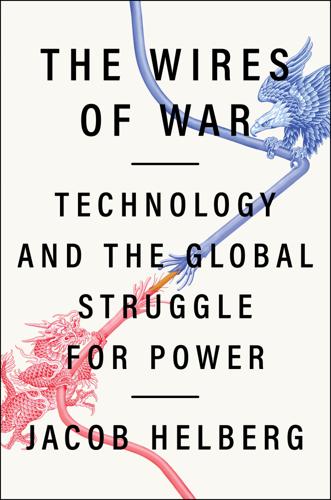
The Wires of War: Technology and the Global Struggle for Power
by
Jacob Helberg
Published 11 Oct 2021
The facility, known as the TSMC, is the source of more than half the world’s outsourced semiconductor manufacturing. Silicon Valley may design the chips, but Taiwan produces them. If we’re being entirely accurate, the inscription on your iPhone should actually read, “Designed by Apple in California. Chips Manufactured in Taiwan. Assembled in China.” And it’s not just every iPhone that relies on TSMC chips. So do laptops, video games, and F-35 fighter jets. In light of its centrality to the most important electronic equipment in the world, the TSMC is now the world’s tenth most valuable company.66 The TSMC had managed to straddle both sides of the Sino-U.S. tech divide, with American companies accounting for about 60 percent of its business and Chinese firms making up another 20 percent.
…
-China Economic and Security Review Commission,” Center for a New American Security, January 25, 2018, https://www.uscc.gov/sites/default/files/Kliman_USCC%20Testimony_20180119.pdf. 65 “Index W,” Theodore Roosevelt Association, https://theodoreroosevelt.org/content.aspx?page_id=22&club_id=991271&module_id=339551&actr=4. 66 Eamon Barrett, “Intel’s decline makes rival chipmaker TSMC the world’s 10th most valuable company,” Fortune, July 28, 2020, https://fortune.com/2020/07/28/intel-7nm-delay-tsmc-stock-shares-worlds-tenth-most-valuable-company/. 67 Sherisse Pham, “Taiwan chip maker TSMC’s $12 billion Arizona factory could give the US an edge in manufacturing,” CNN, May 15, 2020, https://www.cnn.com/2020/05/15/tech/tsmc-arizona-chip-factory-intl-hnk/index.html. 68 Eamon Barrett, “Semiconductors are a weapon in the U.S.-China trade war. Can this chipmaker serve both sides?
…
Can this chipmaker serve both sides?,” Fortune, August 10, 2020, https://fortune.com/2020/08/10/us-china-trade-war-semiconductors-chips-tsmc-chipmakers/. 69 “Chipmaker TSMC eyeing expansion of planned Arizona plant -sources,” Reuters, May 4, 2021, https://www.reuters.com/technology/chipmaker-tsmc-eyeing-expansion-planned-arizona-plant-sources-2021-05-04/. 70 Steven Lee Myers and Javier C. Hernandez, “With a Wary Eye on China, Taiwan Moves to Revamp Its Military,” New York Times, August 30, 2020, https://www.nytimes.com/2020/08/30/world/asia/taiwan-china-military.html. 71 Ibid. 72 David Wertime, “Former intel officers: U.S. must update its thinking on Taiwan,” Politico, October 8, 2020, https://www.politico.com/newsletters/politico-china-watcher/2020/10/08/former-intel-officers-were-thinking-about-taiwan-wrong-taipei-beijing-washington-conflict-490547. 73 Brad Lendon, “The US is standing firm with Taiwan, and it’s making that point very clear,” CNN, September 2, 2020, https://www.cnn.com/2020/09/02/asia/china-taiwan-us-analysis-intl-hnk/index.html. 74 Paula Hancocks and Ben Westcott, “Taiwan risks being caught up in the power struggle between the United States and China,” CNN, August 15, 2020, https://edition.cnn.com/2020/08/14/asia/taiwan-tsai-trump-azer-china-intl-hnk/index.html. 75 “50 U.S. senators call for talks on trade agreement with Taiwan,” Reuters, October 1, 2020, https://www.reuters.com/article/us-usa-taiwan-china-idUSKBN26M7HL. 76 David R.
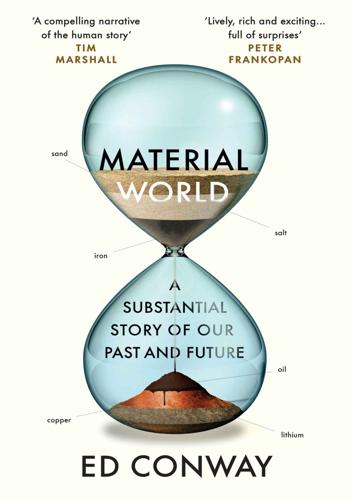
Material World: A Substantial Story of Our Past and Future
by
Ed Conway
Published 15 Jun 2023
But over the following years, in much the same way as the Prussian state helped the glass industry of Jena, the Taiwanese government steadily supported TSMC. What really set it apart from established rivals like Texas Instruments or Intel was its business model: while those companies designed and manufactured the chips themselves, TSMC would make chips for other people – it would be a ‘foundry’. If you are looking for a company that embodies the Material World, you could hardly do better than TSMC. Here is a business whose sole purpose is to manufacture the processors dreamed up by Apple or Tesla, or ‘fabless’ chip companies like Nvidia and Qualcomm (‘fab’ being short for fabrication plant).
…
While in theory the export ban will likely hamper China’s efforts to catch up with the Taiwanese and South Korean industries, according to some senior figures in the business, the gap had already been widening rather than narrowing for some time. A decade ago SMIC’s technology was four years behind TSMC’s. Today SMIC is thought to be 10 or 12 years behind TSMC, despite a flood of government money being unleashed on the sector. In much the same way as they vied with each other to build the biggest bridge or the most high-speed railway lines a few years ago, today Chinese provinces are all building new fabs. The problem, however, is that they are struggling to find the expertise to run them.
…
Yet it is hard, mind-boggling, even, to imagine compressing the journey we have just experienced into a single country, without relying on companies or imports from other parts of the world. Even if China invaded Taiwan and even if TSMC’s fabs survived the assault (some have suggested that the company incorporates explosives into the foundations, to be detonated upon invasion much as armies destroy bridges before retreating), that would not resolve its issue. Fab 18 might be where the world’s most advanced chips are made, but they are mostly designed elsewhere, primarily in the US, with intellectual property that derives from a company based in Cambridge, England: ARM. TSMC’s fabs would not function without machine tools from the Netherlands and Japan, or chemicals from Germany and bits and pieces from a range of other nations.

Boom: Bubbles and the End of Stagnation
by
Byrne Hobart
and
Tobias Huber
Published 29 Oct 2024
As Jerry Sanders, AMD’s CEO and a member of the Fairchild diaspora, once put it: “Now hear me and hear me well. Real men have fabs!” 234 TSMC’s approach borrowed some elements from the Fairchild model. While TSMC didn’t design chips, it did recognize that making chip design easier would be a competitive advantage, so TSMC worked closely with chip designers to ensure there was plenty of demand for its foundries. The company also strove to commoditize the design business—if there were more companies inventing new chips and fewer companies manufacturing them, they reasoned, the manufacturers would be able to set their own price. TSMC’s strategy effectively redefined the market, creating a separation between the capital-intensive business of fabricating chips and the more asset-light business of designing them, a model that was ultimately embraced even by Intel.
…
In 1973, the Taiwanese government founded the Industrial Technology Research Institute to ensure that the country had indigenous research and development abilities. This led to the founding of United Microelectronics Corporation (UMC) and Taiwan Semiconductor Manufacturing (TSMC), which pioneered a unique business model that involved exclusively building chips designed by other companies. As with many other bubbles, they took a somewhat faith-based approach. Not only did TSMC have to believe demand for chip fabrication would continue to exist, it had to believe that this demand wouldn’t be met by companies with their own fabrication capabilities. While smaller chip companies were getting priced out of fabricating their own chips, consensus in the industry held that chip companies needed to do their own manufacturing as well as design.
…
Tipler, The Physics of Immortality: Modern Cosmology, God, and the Resurrection of the Dead (New York: Doubleday, 1994). 374 Even the chip industry has its spiritual dimension. Given the miraculous process involved in endowing sand with intelligence, it’s no wonder some have proclaimed that they saw the “face of God” etched into TSMC-produced semiconductors. Virginia Heffernan, “I Saw the Face of God in a Semiconductor Factory,” Wired, March 21, 2023, https://www.wired.com/story/i-saw-the-face-of-god-in-a-tsmc-factory/. 375 Nick Bostrom, Superintelligence: Paths, Dangers, Strategies (Oxford: Oxford University Press, 2014). 376 1 Corinthians, 15:51. 377 Alan Turing, “Computing Machines and Intelligence,” in Computers and Thought, ed.
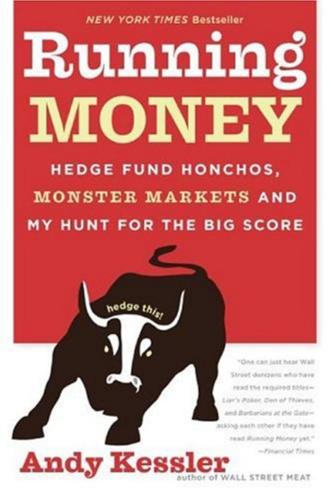
Running Money
by
Andy Kessler
Published 4 Jun 2007
My friend, Hank Zona, used to nod his head in someone’s direction and whisper, “That guy has more chins than a Chinese phone book.” I never knew what that meant, but now I do—14 pages’ worth. The address was simply Science-based Industrial Park. The taxi driver never heard of TSMC. This was 1991. By 2001, he probably worked for TSMC. I was met in the lobby by Dr. Morris Chang. “OK, let’s go then. You’ll need a bunny suit.” I had been on enough tours to know the routine. I put the white booties over my shoes and slid on pants, a jacket and a sur- 132 Running Money gical cap to tuck all my hair into.
…
I could have gone back to other venture capitalists and raised the $100 million I needed to build a fab, but they would have owned the company, not me and my team. So we looked around to see if anyone had a fab they weren’t using completely and maybe wanted to rent us some space.” “Did you find one around here?” “No, we found TSMC instead.” “Who?” “The Taiwan Semiconductor Manufacturing Company. All they do is run a fab and sell finished wafers to us at a fixed price. We can put anything we want on those wafers, same price. So we crank out more designs, and these guys will manufacture them all.” “This is a big change.” “It’s really no different than the publishing business.
…
Investors “get” profits—it is their common language. My problem was in believing that someone would just make chips for Xilinx or any of the other fab-less chip companies that quickly followed. My annual December trip to the Far East was coming up, so I scheduled a side trip to Taipei. It was a bit more than a day trip to Kansas City. TSMC was located in Hsinchu City, a bumpy hour-plus cab ride from Taipei. I had never been to Taiwan before, but I had a whopping 18 hours to figure out how this fab-less stuff worked—no time to see the sights. Hsinchu City looked a lot like Parsippany, New Jersey: a bunch of industrial parks, a couple of malls and one medium-size hotel.
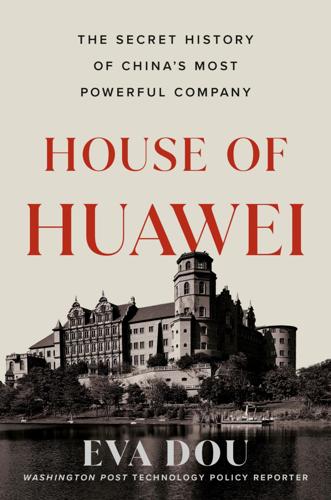
House of Huawei: The Secret History of China's Most Powerful Company
by
Eva Dou
Published 14 Jan 2025
In May 2020, the Commerce Department tightened the sanctions on Huawei, preventing not only the direct sale of US technology to the company but also the sale of any chips that were made using US technology without a special license. This new rule was wonky, but its implications for Huawei were massive. While Huawei had been designing some of its chips in-house through HiSilicon, it relied on the Taiwan Semiconductor Manufacturing Company, or TSMC, to produce them. When it came to manufacturing advanced chips, TSMC was the very best. One time when Ren met with TSMC’s founder, Morris Chang, the two men marveled at how their lives had diverged. Born thirteen years before Ren in mainland China, Chang had also spent his early years in the tumult of war, but had left in 1949 to study at Harvard University.
…
After a flourishing career at Texas Instruments, he’d moved to Taiwan and went on to build the most advanced chip manufacturer in the world. “Why have the two of us walked different paths?” Chang mused.[20] Ren replied that Taiwan was decades ahead of the mainland in opening up to the world, decades ahead in developing technology. TSMC had supplied Huawei for years, but now, under the threat of sanctions, it could not risk losing access to US technology to run its own operations. TSMC shut its doors to Huawei. Huawei’s only hope now was for China’s domestic chip foundry, the Semiconductor Manufacturing International Corporation, or SMIC, to learn how to produce advanced chips at lightning speeds. This was a real Hail Mary: SMIC had been endeavoring for two decades to advance its technologies but still lagged several generations behind global leaders in advanced chipmaking.
…
See also Russia Cold War, xxxviii–xl, 9, 106, 368 collapse of, xl, 106–7 Spain, 240 Spavor, Michael detention, xl–xli, 292, 320, 381 legal proceedings, 335–36 Meng’s extradition case and, 292, 323–24 release and aftermath, 338, 341–43, 382 Spavor, Paul, 343 SpeedConnect, 219 Sprint Nextel, 194–98, 202, 203–4, 378 Sputnik 1, xxxix–xl, 9, 368 Sri Lanka, 244 Standard Chartered PLC, 235 standard-essential patents (SEPs), 270 Stanford University, 266, 302 Star Trek (movie), 276 State Economic and Trade Commission, 74 Stecklow, Steve, 231–32 steelmaking, 9–10 Steinmann, Eric, 155 Stone Group, 32, 50–51, 56–57, 70, 119–20, 349–50 Subler, Jason, 236 submarine cables, 167–68, 202, 206, 376 Sudan, 278 Suffolk, John, 209, 241, 330–31 suicide, 14, 125, 136–37, 175–77 Sunday Communications, 149, 154 Sun Microsystems, 145 Sun Yafang, xviii alleged ties to Ministry of State Security, 85, 130–31, 279–80, 314 background of, 85–87 death of Cheng Yuanzhao, 142 death of Deng Xiaoping, 90 at Harvard Business School, 129, 374 at Huawei, xxvii, 69, 85–88, 98, 117, 128, 129–31, 137, 201, 224–25, 244 management culture, 175, 177–78 promotion to chairwoman, 129, 178, 374 retirement, 279–80, 356, 380 surveillance, 75–76, 94–95, 168–69, 188–93, 207–10 big data and, 253–57 Huawei’s HiSilicon, 189–90, 265, 275–76, 304–5, 325, 346, 370 Huawei’s Safe City, xxix, 208–10, 243, 254–55, 256–57, 276, 378 modern era of, 272–83 Snowden leaks, 237–42, 246, 379 Swarovski, 264 Sweden, 138, 158, 328, 374 Swift, Kerry, 301 Switzerland, 31 Symantec, 211–12 Syria, 278 T Taiwan, 24, 95, 190, 191, 353 Taiwan Semiconductor Manufacturing Company (TSMC), 325–26 Taiwan Strait Crisis of 1995–1996, 105–6 Taliban, 145–46, 165, 375 Target, 253 TASS Russian News Agency, 106 Taylorism, 119 Technip and Speichim, 25–27 technology transfer, 60, 69, 169–70 Telefónica, 160, 243 telegraphs, 58–59 telephones, 59–60.
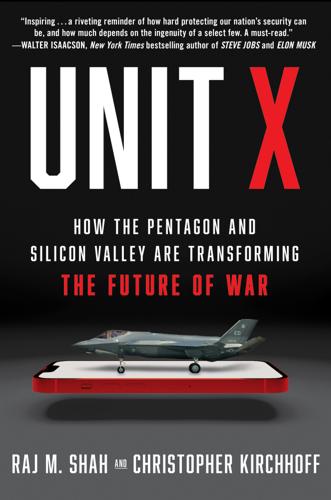
Unit X: How the Pentagon and Silicon Valley Are Transforming the Future of War
by
Raj M. Shah
and
Christopher Kirchhoff
Published 8 Jul 2024
The problem had taken two generations to manifest and would take at least a generation to unwind. Fabs cost billions of dollars and years to build. Even if the U.S. was willing to invest the capital, it lacked the know-how to make the most advanced fabs run. TSMC not only had a monopoly on the physical means of production; the specialized labor to operate these plants was now concentrated eighty-one miles off the coast of America’s potential enemy. Who knew if TSMC would even be willing to share? If they gave away their secrets, would the U.S. rush to Taiwan’s defense when the Chinese finally came? Bringing fabs home would take industrial policy on a scale not seen since the Cold War.
…
Chips continued to be designed by engineers in California, but, increasingly, the high-tech fabs moved to Asia, and Taiwan in particular. With China no longer a friendly neighbor, basing the entire global supply of advanced chip production at three clusters of factories run by the Taiwan Semiconductor Manufacturing Company (TSMC) on the island nation’s west coast suddenly posed an enormous vulnerability to the American way of life. China was by now regularly conducting mock invasions of Taiwan, flying fighter and bomber aircraft and sailing ships and submarines deep into Taiwanese territory. Were China to take over the island or sabotage the fabs on it, technological progress in the U.S. would freeze and then run in reverse.
…
First, the U.S. is a great place to live. Our embassies overseas have lines wrapping around the block with people aspiring to become Americans; that’s not the case with China. Second, we have a vibrant technology and innovation ecosystem. Eight of the world’s ten largest tech companies are based in the U.S., with one in Taiwan (TSMC) and another in China (Tencent). In the U.S. we can’t force companies to build products for the military, but we can create strong incentives for them. Private companies and investors are driven by a profit motive. The government just needs to harness that profit motive to encourage the behavior it desires.
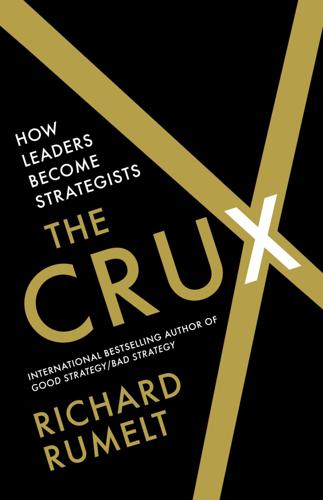
The Crux
by
Richard Rumelt
Published 27 Apr 2022
But in 2017, you would be asked about Intel’s strategy for dealing with the slowing of Moore’s Law. And in 2019, you would be asked about Intel’s strategy for dealing with the rise of special-purpose processors, as developed by Google and Microsoft. And in 2021, you would be asked about the company’s seeming loss of process leadership to the Taiwan Semiconductor Manufacturing Company (TSMC). The idea that Intel has a single unchanging “strategy” that spans these challenges reduces the concept to a slogan or motto, like “Be the best.” Strategy is problem solving, and it is best expressed relative to a particular challenge. Strategy should be an ongoing process. This concept of strategy allows a company to have a strategy process that is not a constant restatement of some vague overall purpose and intent.
…
Recently, AMD’s share of the market increased because its new Ryzen chips outperformed Intel’s current offerings.6 • Manufacturing. Intel was having major problems moving from its 14nm node to the 10nm node. Intel’s delays not only were embarrassing to the company, but put other tech companies plans at risk.7 Contract chip foundry TSMC did not seem to have experienced these problems at this node, allowing Intel’s chief chip rival, AMD, to jump ahead in its processor performance. • Missing Mobile. Intel’s strategy in mobile had been to develop the Atom, a small x86 processor optimized for mobile devices. The offering did not win many mobile phone placements.
…
Study-Group Analysis The study group agreed that the set of issues facing Intel were gnarly. They differed in their opinions about importance. Ashok, one of the participants, said, “They have to solve the manufacturing issues. If they don’t, they will lose the cloud and all their revenue. If Intel cannot make the next 7nm node, it might as well just become another customer for TSMC.” Differing sharply, Abigail felt that culture was issue number one. She offered that “the whole race to smaller and smaller is coming to an end. The cloud is turning into a cost game, and Intel is not ready for that. It has coasted on the Wintel standard for years and is not prepared for cost competition.”

The Coming Wave: Technology, Power, and the Twenty-First Century's Greatest Dilemma
by
Mustafa Suleyman
Published 4 Sep 2023
It’s remarkable how this legacy is only slowly disappearing. In AI, the lion’s share of the most advanced GPUs essential to the latest models are designed by one company, the American firm NVIDIA. Most of its chips are manufactured by one company, TSMC, in Taiwan, the most advanced in just a single building, the world’s most sophisticated and expensive factory. TSMC’s machinery to make these chips comes from a single supplier, the Dutch firm ASML, by far Europe’s most valuable and important tech company. ASML’s machines, which use a technique known as extreme ultraviolet lithography and produce chips at levels of astonishing atomic precision, are among the most complex manufactured goods in history.
…
See authoritarianism; surveillance traffic optimization, 98 transcriptors, 88 transformers, 64, 90–91 transistor, 32–33, 67 Treaty on the Non-proliferation of Nuclear Weapons (1968), 43, 263 Tsar Bomba, 42 Tsinghua University, 121 TSMC, 251 Turing, Alan, 35, 75 23andMe, 81 2001: A Space Odyssey, 110 U Uighur ethnic cleansing, 195 Ukraine, 44, 103–4, 161–62 Unabomber, 213 United States export controls, 249–50 international cooperation and, 265–66 surveillance, 195 universal basic income (UBI), 262 University of Oxford, 101 Urban II (pope), 39 urbanization, technology waves and, 27–28 U.S.
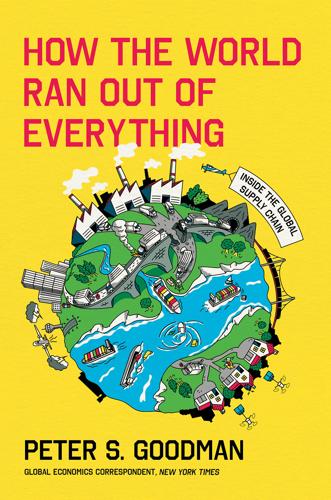
How the World Ran Out of Everything
by
Peter S. Goodman
Published 11 Jun 2024
This was the price of adjusting to the geopolitical realities altering international trade, shifting the supply of chips needed by American industry away from an island that could, at any moment, come under assault from China. At a ceremony to commemorate the installation of the tools for the plant, Morris Chang, the ninety-one-year-old founder of TSMC, cited the Arizona investment as an indication of the world economy being reshaped by the imperatives of reshoring. “Globalization is almost dead30,” Chang declared. By the end of 2022, the semiconductor industry had dedicated almost $200 billion to construct and expand forty factories31 engaged in chipmaking in sixteen states, while generating forty thousand future jobs.
…
Taiwan Semiconductor Manufacturing: Don Clark and Kellen Browning, “In Phoenix, a Taiwanese Chip Giant Builds a Hedge Against China,” New York Times, December 7, 2022, B1. 28. four to five times: Kevin Xu, “The Cost of Deglobalization,” Noema, February 23, 2023. 29. half again as much: Yang Jie, “TSMC’s Arizona Chip Plant, Awaiting Biden Visit, Faces Birthing Pains,” Wall Street Journal, December 5, 2022. 30. “Globalization is almost dead”: Kevin Xu, “Globalization Is Dead and No One Is Listening,” Interconnected, December 12, 2022, https://interconnect.substack.com/p/globalization-is-dead-and-no-one. 31. expand forty factories: Robert Casanova, “The CHIPS Act Has Already Sparked $200 Billion in Private Investments for U.S.
…
See Great Supply Chain Disruption Surface Transportation Board, 208, 210, 212, 214, 215 Swift (meat company), 250, 274 Swift (trucking firm), 181–84 Taiwan China’s relations with, 32, 283–84 component assembly in, 42 computer chip manufacturing in, 79, 80 COVID-19 and production capacity of, 79 earthquake (1999), 74, 79 seaports developed in, 100 Taiwan Semiconductor Manufacturing Company (TSMC), 53–54, 305, 306 Tec de Monterrey, 324 Tesla, 21 Thai-Tang, Hau, 55 Tiananmen Square uprising, 27, 29 toilet paper shortage, 43 Tomazoni, Gilberto, 256 Toor, Sunny, 132–33 Total Terminals International (TTI), 162, 177 Toyoda, Eiji, 62 Toyoda, Sakichi, 61 Toyota COVID-19 pandemic and production problems of, 79 Just in Time success of (Toyota Production System), 42, 56, 57–64, 68, 336, 351 suppliers of, 333 Trade Adjustment Assistance (US), 37 Travaille & Phippen, 124 trucking industry.
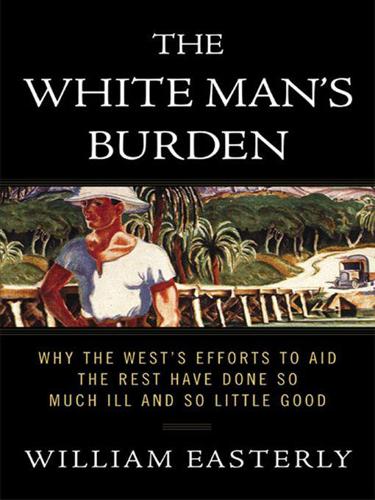
The White Man's Burden: Why the West's Efforts to Aid the Rest Have Done So Much Ill and So Little Good
by
William Easterly
Published 1 Mar 2006
High-technology Exports of East Asia Six: China, Hong Kong, Korea, Malaysia, Singapore, and Thailand Taiwan, whose numbers figure 34 above does not include because the cowardly international agencies do not recognize it, has become a remarkable technological success story. The Taiwan Semiconductor Machinery Corporation (TSMC) is the world’s largest producer of foundry chips. The Electronics Research and Service Organization (itself started by the Taiwanese government in the early 1970s to get a jump on the IT industry) started the TSMC as a joint venture with Phillips of Holland in 1987.12 Today TSMC has sales of $2.3 billion.13 Taiwan also produces such complex items as notebook and desktop PCs, video cards, and sound cards. Acer Computers of Taiwan is the world’s third-largest manufacturer of PCs, with sales of eight billion dollars.14 Taiwan’s amazing economy has produced ten billionaires.15 The Dark Continent Born Again But what hope could there be for a region impoverished by warlords, civil conflict, unending war, corruption, and brutal tyrants, after futile attempts by the West to influence events?
…
Turnbull, A History of Singapore 1819–1975, Kuala Lumpur: Oxford University Press, 1977, p. 89. 11.http://www.nsf.gov/sbe/srs/nsf05300/pdf/tables.pdf. 12.Alice Amsden, The Rise of the “Rest”: Challenges to the West from Late-Industrializing Economies, New York: Oxford University Press, 2001, p. 221. 13.http://www.tsmc.com/english/a_about/a_about_index.htm. 14.Amsden, Rise of the “Rest,” p. 193, 199; http://www.brandingasia.com/cases/ case1.htm. 15.http://www.forbes.com/lists/results.jhtml?passListId=10&passYear=2004&pass ListType=Person&resultsStart=1&resultsHowMany=25&resultsSortProperties= %2Bnumberfield1%2C%2Bstringfield1&resultsSortCategoryName=rank& category1=Country+of+Residence&searchParameter1=7Str%7C%7CPatCS% 7C%7CTaiwan&category2=category&searchParameter2=unset. 16.Jonathan Spence, To Change China: Western Advisers in China, New York: Penguin Books, 1969. 17.Christopher Jespersen, American Images of China, 1931–1949, Stanford, Calif.: Stanford University Press, 1996, p. 37. 18.John King Fairbank and Merle Goldman, China: A New History, Cambridge, Mass.: Belknap/Harvard, 1998, p. 284. 19.Jonathan Spence, The Search for Modern China, 2d ed., New York: Norton, 1999. 20.Jespersen, American Images, p. 120; Fairbank and Goldman, China, p. 291. 21.Rist, The History of Development, p. 65. 22.For year ending in September 2004, http://www.census.gov/foreign-trade/ statistics/product/naics/naicsctry/imports/i316214.html. 23.Amsden, Rise of the “Rest,” p. 217. 24.http://lnweb18.worldbank.org/eap/eap.nsf/Countries/China/42F2084B942D74 C68p. 5256C7600687DBF?
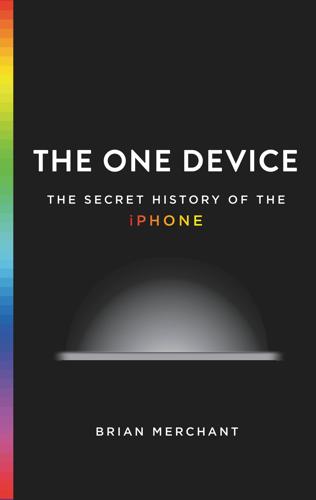
The One Device: The Secret History of the iPhone
by
Brian Merchant
Published 19 Jun 2017
Somewhere, in nearly every corner of this sprawling city, someone is building a part that will end up in an iPhone, or maybe snapping the whole thing together. Of the two hundred addresses that Apple lists for its top suppliers on its annual report, nearly half are located in just two cities: here and Shenzhen. The forty suppliers here in Shanghai, like TSMC, the chip manufacturer that produces the iPhone’s ARM-based brain, are scattered far and wide across the city. When I arrive at TSMC’s headquarters, the security checkpoint is posted far from the complex, so I can’t see much of anything besides the well-groomed lawn and the mammoth gray-and-red plant walls. The guards, of course, won’t let me in for a closer look.
…
My fixer and translator, Wang Yang—we’ve chosen to use a pseudonym to protect her identity—was a tremendous help in getting factory workers to talk. She’s a big reason we spoke to a couple dozen sources over the course of a handful of visits. We visited Foxconn’s Longhua and Guanlan and Pegatron’s Shanghai factory, as well as supplier factories such as TSMC, the chip fabricator. Of the Foxconn employees, Xu, Zhao, and their friend were the most candid, but many factory workers were willing to speak to us outside the gates, at lunchtime noodle shops, and at the local market. From these interviews, combined with research from the above sources, I feel confident I was able to capture a solid snapshot of the state of play at China’s electronics factories.
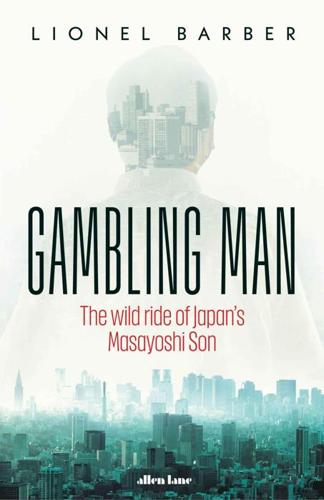
Gambling Man
by
Lionel Barber
Published 3 Oct 2024
Today, it is the company at the centre of yet another Masa super-vision: a $64bn plan to transform SoftBank Group into a sprawling AI powerhouse, including a foray into the development of artificial-intelligence chips. In May 2024, Masa unveiled plans for ARM to set up an AI chip division. The goal is to build a prototype by 2025, with each chip being able to process vast volumes of data. Mass production is to be handled by contract manufacturers such as Taiwan’s TSMC and is expected to begin in the autumn of that year. This hugely ambitious venture aims to create SoftBank Group’s own vertically integrated AI ecosystem, from manufacturing chips to operating data centres and industrial robots and power generation. Once again, Masa has confounded his critics and wrong-footed rivals.
…
His AI super-chip venture marks an attempt to catch up with Nvidia in a market estimated at $30bn in 2024, and expected to exceed $100bn in 2029 and top $200bn in 2032.3 As Chris Miller recounts in his book Chip Wars, military, economic and geopolitical power rests on the foundation of computer chips. They power missiles, smartphones and the stock market; but super-chips are a scare resource and the world is overly dependent on Taiwan’s TSMC as supplier. Hence the race to diversify supply, with China, the US, Japan, South Korea and multiple other countries investing billions to establish their own capacity. Masa has inserted himself into a position where he can try to influence the battle to control the world’s most critical resource: the microchip.4 In our conversation in Tokyo in October 2023, Masa recounted again his ‘Eureka moment’ when he first saw the picture of a microprocessor in a computer magazine.
…
BB, 158–63, 164–7, 171, 172–4, 178, 182, 186, 205 see also dot-com bubble (1998-2000); mobile internet telemarketing business, 86–7 Temasek (Singapore’s sovereign wealth fund), 224 Tepco (Tokyo Electric Power Company), 159, 214–15, 220 Tesla, 35, 259, 274–5, 276, 312 Thapar, Ayesha, 234–5 Tiger Global, 282 TikTok, 284, 321 Time Warner, 2 T-Mobile, 224–5, 226, 227, 231, 232, 235, 240, 267, 268, 298, 317, 334 Tokaido Shinkansen (train), 21 Tokuda, Hiromi, 82 Tokyo: Great Kanto Earthquake (1923), 10; Hatakeyama Memorial Museum of Fine Art, 206–7; International Forum, 209; Masa moves to (early 1980s), 52; Masa’s first trip to, 25–6, 33; Masa’s secret luxury home in, 6, 204–7, 238–9, 315; New Otani in, 62, 63–4; SoftBank headquarters in, 68, 99, 143, 263, 296, 327, 333–4; summer Olympics in (1964), 21; Toranomon Hospital, 68, 69; Velfarre discotheque, 1–3, 148 Tokyo Metallic, 159 Tokyu Corporation, 84, 85 Toshiba, 90, 119, 288 Toshishida, Kobayashi, 91, 94 Tosu, 11, 15–16, 35; Korean settlement near railway station, 15, 16–17, 18–19, 23; large wooden home outside (‘The Palace’), 19–20, 22*, 44, 81, 85–6; during Second World War, 11–12; Son family returns to (1947), 14, 15 Townsend, Rob, 288–9, 311, 314, 317–18 TPG (private equity firm), 241 Trujillo, Anthony, 32, 76 Trump, Donald, 5, 227, 267–9, 270, 294, 320, 321 Trump, Ivanka, 294 Tsai, Joe, 143–4, 169–70, 174, 176–7 TSMC (Taiwanese chip supplier), 329, 331 Tsutsui, Takashi, 159 Tu, John, 108–9, 110–11 Turkey, 246, 278–9 Twentieth Century Fox, 119 Twitter, 209, 298 Uber, 270, 273, 283 Uniqlo (Fast Retailing), 163, 218, 243, 279, 313 United Arab Emirates (UAE), 260, 265–6, 282, 284, 290, 326 United Kingdom: ARM Holdings, 242, 244–55, 259, 265–6, 323, 329–31; Brexit, 250, 251, 254; deregulation in, 172; fall of Singapore (1941), 34; imperial infrastructure, 178; and Murdoch, 112, 117; Qatari ownership in London, 261, 262; and SoftBank’s purchase of ARM, 244–55; Vodafone, 172, 179–81, 182–8, 189, 191, 245 United States: Committee on Foreign Investment in the United States (CFIUS), 275–6; Federal Communications Commission, 225–7, 229; Fujita’s advice to Masa, 26; housing market, 193–4; local zoning regulations, 226, 230–31; Masa’s education in, 30–34, 35, 36–9, 40–47; Masa’s first trip to, 27–8; Masa’s secrecy over travel to, 76–7; Masa’s telecoms acquisitions strategy (2011-14), 225–7; occupation of Japan (1945-51), 12, 17; Plaza Accord (22 September 1985), 69–70, 80; Reagan’s Star Wars programme, 181, 272; and Second World War, 11, 12; Son as investor in, 4–5; Trump wins Presidential election (2016), 267–8; venture capital funding for internet start-ups, 3, 5 Unix User, 106 Upgrade Corp, 87–9 UTStarcom, 145–6, 158 Valentine, Don, 105 Velfarre (Tokyo discotheque), 1–3, 148 venture capital (VC): ‘carry’ performance fee, 287; ‘collar’ strategy, 304; and crisis at WeWork, 291, 293, 294, 296; funding for tech start-ups in US, 3, 5; Masa’s first steps in (SoftBank Venture Capital), 84; Masa’s investment in Yahoo!

The Power of Pull: How Small Moves, Smartly Made, Can Set Big Things in Motion
by
John Hagel Iii
and
John Seely Brown
Published 12 Apr 2010
From the United States, participants in the PortalPlayer network included Texas Instruments and Linear Technologies, a small company specializing in power-management integrated circuits. From Japan, PortalPlayer recruited Sharp to provide flash memory, Sony for battery technology, and Toshiba for hard-disk-drive technology. In Taiwan, PortalPlayer developed close relationships with both United Microelectronics Corporation (UMC) and Taiwan Semiconductor Manufacturing Company (TSMC) to access silicon-foundry capabilities. In effect, PortalPlayer had deployed a pull platform to drive rapid iterations of innovative MP3 designs by accessing and connecting with world-class capabilities from specialized companies around the globe. When Apple came up with an idea for a new MP3 product line coupled with an online music store, it approached PortalPlayer to mobilize its global design network; as a result, Apple was able to enter the market with its iPod just nine months after the initial product approval.
…
See Geographic spikes Standards adopted through shaping strategies adoption of McLean’s containerized shipping driven through shaping strategies Novell’s network operating system as de facto of protocols designed to facilitate interactions Visa Start-up companies Stocks (equities) Stocks of knowledge compared to flows of new knowledge as diminishing in value as means, ends, toward knowledge flows Storage law for data Stress in push systems Stress in the workplace Strong ties Success Super-nodes Surfaces, exposing Surfermag.com Surfingthemag.com Surfline.com Sur vival access as essential toig and serendipity Tacit knowledge about how to do new things conveyed through conferences cultivated through listening, empathy described versus explicit Taiwan Semiconductor Manufacturing Company (TSMC) Talent development institutions reoriented around needed by institutions as new trajectory of institutions and open-innovation efforts supported by focused initiatives TCP/IP standard Teahupoo, Tahiti Teams and guilds as collaborative creation efforts interacting, as creation space success elements as peer-to-peer networks performance-driven of surfers World of Warcraft (WoW) social networks Teasers for online social network attention Technological Revolutions and Financial Capital (Perez) Technology CPU innovation breaks down push distinguished from platforms as tool for reaching talent outside institutions Tertius Gaudens Tertius Iungens Tesla Motors Texas Instruments Thinking for a Living (Davenport) Thomas, Doug T-Mobile Too big to fail concept Toshiba Tow-in surfing Toyota Toys and games industries Training programs Trajectory defined as meaningful destination as element of journey toward pull igigig for finding, motivating, individual passion, creativity as shaping view of talent development for institutions Travel services as search engines Travelocity The Travels and Adventures of Serendipity (Merton and Barber) “The Travels and Adventures of Three Princes of Sarendip” fable Twitter in corporate contexts Iranian protests videos secured script used by protestors in Iran TWsurf.com Uncertainty.

Reset
by
Ronald J. Deibert
Published 14 Aug 2020
Supply chains of companies like Apple, Samsung, and Intel are difficult to unravel and layered on top of one another, “a complex structure of supply chains within supply chains, a zooming fractal of tens of thousands of suppliers, millions of kilometers of shipped materials and hundreds of thousands of workers included within the process even before the product is assembled on the line.”327 A typical smartphone could have tens of thousands of individual components, sourced from hundreds of different companies, that snake their way through a sprawling network of miners, smelters, traders, shippers, and manufacturers in dozens of different jurisdictions. For example, the Apple A12 chip, designed in Cupertino, California, may be sourced from chip fabrication facilities in Taiwan, operated by a company like TSMC. From there, the chip may be packaged and tested by a company called Amkor, in the Philippines, and from there shipped to the Foxconn assembly plants in China before then being shipped around the world after assembly to wherever the consumers are located. Tracking the individual components of such a supply chain to ensure compliance with labour and environmental safeguards is extremely challenging for even the most well-intentioned company.
…
See Innis, Harold; McLuhan, Marshall Total S.A., 241 Tracking GhostNet (Citizen Lab), 204 Traffic & Conversion Summit, 101 TripleLift, 60 Trudeau, Justin, 192 Trump, Donald, 3, 182, 287 as false information source, 4, 110, 120, 268, 269 social media use, 110–111, 269, 303 Trump, Donald, Jr., 88 Trump, Melania, 110 tsmc Co., 227 Tubaigy, Salah Muhammed, 137 Turkmenistan, 150–151, 192 23andMe, 71–72 Twitter, 2, 28, 48, 107, 111 activism on, 138, 139, 142, 156–157 data retrieval from, 183, 189–190 false information on, 84, 110, 126, 131, 140–142 UC Browser (app), 68–69 Ukraine, 82–83 United Airlines, 59 United Arab Emirates (uae), 149–152, 171 United Fruit Co., 116 United Kingdom, 3, 82, 118 Government Communications Headquarters, 43–44 United Nations, 279, 325, 326 United States.

Slouching Towards Utopia: An Economic History of the Twentieth Century
by
J. Bradford Delong
Published 6 Apr 2020
By applying or removing small voltages of electrical current and electromagnetic pressure, we can flip that switch on and off as we choose, and so let the current flow or not as we choose. Right now, in the semiconductor fabricators of the Taiwan Semiconductor Manufacturing Company (TSMC), the machines that it has bought (from ASML Holding in the Netherlands and Applied Materials in Silicon Valley) and installed and programmed are carving thirteen billion such semiconductor solid-state switches with attached current and control paths onto a piece of a wafer that will become a crystal silicon “chip” about two-fifths of an inch wide and two-fifths of an inch tall. TSMC’s marketing materials imply that the smallest of the carved features is only twenty-five silicon atoms wide.
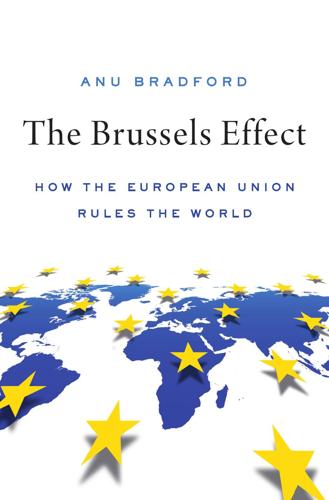
The Brussels Effect: How the European Union Rules the World
by
Anu Bradford
Published 14 Sep 2020
The External Effects of EU Environmental Legislation on the United States, 241 (2011). 65.Id. 66.Id. 67.Hitachi Group to Eliminate 6 Chemical Substances Targeted in RoHS by March 2005 Shifting to Lead-Free Solder by March 2004 in Japan and by March 2005 Worldwide, Hitachi (Dec. 1, 2003), http://www.hitachi.com/New/cnews/031201.html [https://perma.cc/N5TA-NANJ]. 68.Id. 69.Top 15 Semiconductor Sales Leaders—2018F, AnySilicon (Nov. 12, 2018), https://anysilicon.com/top-15-semiconductor-sales-leaders-2018f/ [https://perma.cc/8VB5-6LPS]. 70.Corporate Social Responsibility Report, TSMC 48 (2017), https://www.tsmc.com/download/csr/2018_tsmc_csr/english/pdf/e_all.pdf [https://perma.cc/FN3K-MNKM]. 71.MediaTek is a fabless semiconductor company that provides system-on-chip solutions for wireless communications, HDTV, DVD and Blu-ray, and cell phone. Corporate Social Responsibility Report, MediaTek 139 (2015), https://d86o2zu8ugzlg.cloudfront.net/mediatek-craft/reports/CSR/2015-MediaTek-Corporate-Sustainability-Report-Final.pdf (last visited Feb. 7, 2017) [https://perma.cc/E6VX-M4EA]. 72.Overcome ROHS, EU’s First Environmental Regulation, Sci.

How Asia Works
by
Joe Studwell
Published 1 Jul 2013
State-owned companies were successful in the steel industry in Japan, Korea and Taiwan, steadily raising the quality of output in an industry that seems given to bureaucratic-style public sector control. In Taiwan’s state-dominated industrial policy, public firms such as United MicroElectronics and TSMC were also successful in getting to and remaining at the forefront of many types of semiconductor production. However, Taiwan and the rest of north-east Asia had plenty of examples of state firm failure – or at least underperformance compared with private companies. In Taiwan and Korea, for instance, state-owned shipbuilders failed to keep pace with private ones.
…
See Tibor Scitovsky, ‘Economic Development in Taiwan and South Korea’, in L. Lau, ed., Models of Development: A Comparative Study of Economic Growth in South Korea and Taiwan (San Francisco: Institute for Contemporary Affairs, 1986), p.160. 64. The best known are United MicroElectronics, which is state-controlled but with five private partners, and TSMC, the government joint venture with Holland’s Philips which in 1986 invested in a first ASICs foundry in Taiwan. See Wade, Governing the Market, p. 103. 65. See Kuo et al., The Taiwan Success Story, p. 109. The authors calculated that exports accounted for 22.5 per cent of increased manufacturing production in 1956–61 and 68 per cent in 1971–6. 66.

Age of Context: Mobile, Sensors, Data and the Future of Privacy
by
Robert Scoble
and
Shel Israel
Published 4 Sep 2013
Unlike people, sensors work tirelessly, never needing sleep and never demanding a raise. They notice changes where humans miss them, thus ensuring labels are correctly affixed to bottles moving through a factory assembly line. They are used in nuclear power plants for early detection of leaks. Some semiconductor foundries, such as TSMC in Taiwan, are attempting to build what’s known as “lights-out factories,” where sensors will eliminate the need for any employees at all. Unconfirmed reports indicate they are coming close. By the early 1990s, sensors had become so inexpensive and so collectively powerful when used in networks that engineers were starting to believe the number of ways and places they could be useful was almost limitless.

Palo Alto: A History of California, Capitalism, and the World
by
Malcolm Harris
Published 14 Feb 2023
As you read in the previous chapter, Apple got its boards stuffed at unregulated low piece rates by contracted immigrant employees, and Apple was far from alone. An estimated one-third of the region’s Indochinese immigrant population was employed assembling printed wire boards in the 1990s, a whopping 40,000 people.25 The increasing sophistication of Taiwanese contract manufacturers—led by the Taiwan Semiconductor Manufacturing Company (TSMC), which was founded by former Texas Instruments employee and Stanford electrical engineering PhD Morris Chang in 1987—also allowed firms to outsource progressively more work. In China, Deng Xiaoping’s pro-market policies allowed the Taiwanese contractors to “onshore” production to the mainland in turn, where firms enjoyed the privileges that came with the People’s Republic’s first capitalist production enclaves.
…
vii In 1986, the Treasury Department imposed a record $4.75 million fine on Bank of America for failing to report cash transactions across its California branches as required by anti-laundering regulations. Nathaniel C. Nash, “Bank of America Is Told to Pay U.S. $4.75 Million Fine,” New York Times, January 22, 1986. viii Coincidentally, Knight overlapped at Stanford with TSMC founder Morris Chang. Though their firms came to represent different moments in the globalization sequence, we can recognize them as two principals in the same ballet. ix Zimbardo does not seem to consider that passersby correctly assumed that the graduate students had permission from the owner to destroy the car for some inscrutable scientific purpose related to the university and that they were not engaged in any criminal or even (directly) antisocial conduct.
…
The comparison treats the factory as a total environment, like a state. Normally the workplace is only one part of a person’s life, making the numbers difficult to compare. Brian Merchant, The One Device: The Secret History of the iPhone (Little, Brown, 2017), 272. iii A Taiwanese onshoring contractor with Western shareholders, like TSMC, doesn’t have the same problems, though in this case it was their chips being blocked. Bob Davis and Katy Stech Ferek, “U.S. Moves to Cut Off Chip Supplies to Huawei,” Wall Street Journal, May 15, 2020. iv This transition has been most visible in electronics, but it’s not exclusive. In a 2021 essay, James Meek examines wind tower factories in Glasgow, Scotland, and Phu My, Vietnam, both owned by the same South Korean company.
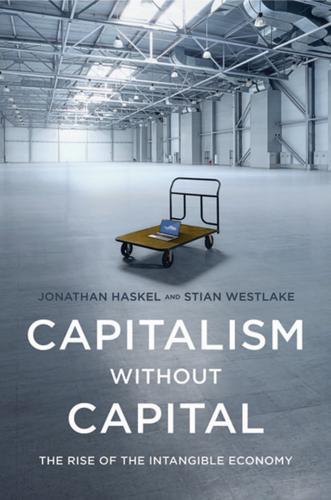
Capitalism Without Capital: The Rise of the Intangible Economy
by
Jonathan Haskel
and
Stian Westlake
Published 7 Nov 2017
By acting as a lead customer (often paying on a cost-plus basis), they effectively funded America’s businesses to invest in the intangibles needed to produce and sell chips, an investment that proved valuable when the businesses expanded into commercial markets. The Taiwanese government’s support for its nascent semiconductor industry in the 1970s and 1980s (particular through its technology agency ITRI) worked similarly: ITRI did not just invest in R&D, it incubated companies like UMC and TSMC, investing in the intangibles they needed to run semiconductor foundries effectively and link them to the global semiconductor supply chain. The success rate of industrial policy in supporting infant industries is an open question; but to the extent that it works, it is an example of government investment in non-R&D public intangibles.
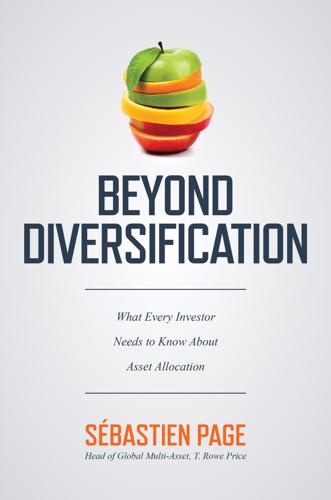
Beyond Diversification: What Every Investor Needs to Know About Asset Allocation
by
Sebastien Page
Published 4 Nov 2020
When the commodities supercycle was in full swing, in mid 2008, energy and materials accounted for more than a third of MSCI EM market capitalisation and tech companies just a tenth. Last month, the commodities group was barely an eighth of EM market cap, and tech companies more than a quarter. This should be no surprise. EM tech companies include the Chinese internet trio of Tencent, Alibaba and Baidu and longer-established names such as Hon Hai and TSMC of Taiwan and Samsung Electronics of South Korea.6 Emerging markets stocks have become more “high tech” and less commodity-dependent. Consumer sectors have also become more prominent. Like the S&P 500, all else being equal, the asset class should be more resilient to traditional economic downturns than in the past.

Digital Empires: The Global Battle to Regulate Technology
by
Anu Bradford
Published 25 Sep 2023
(May 25, 2022), https://www.fpri.org/article/2022/05/believe-biden-when-he-says-america-will-defend-taiwan/; see generally Jessica Chen Weiss, The China Trap: U.S. Foreign Policy and the Perilous Logic of Zero-Sum Competition, Foreign Affs., Sep./Oct. 2022, at 10. 212.John Lee & Jan-Peter Kleinhans, Would China Invade Taiwan for TSMC?, Diplomat (Dec. 15, 2020), https://thediplomat.com/2020/12/would-china-invade-taiwan-for-tsmc/. 213.Henry & Carney, supra note 22. 214.Chen Bo (陈波), Maoyizhan Kaida Sannianduo, Meiguo Dalege Jimo (贸易战开打三年多,美国打了个“寂寞”) [The Trade War Has Been Going for Three Years, but U.S. Has Gained Nothing], Zhongguo Ribao Zhongwen Wang (中国日报中文网) [China Daily Chinese] (Oct. 19, 2021), https://cn.chinadaily.com.cn/a/202110/09/WS61619205a3107be4979f1989.html (China). 215.Thomas J.

Augmented: Life in the Smart Lane
by
Brett King
Published 5 May 2016
Table 1.1: Market Capitalisation of the World’s Top Tech Companies Company Market Cap (billion) Employees Apple 673.91 50,250 Microsoft 406.36 128,000 Google 364.27 53,861 Alibaba 285.14 22,072 Facebook 206 8,348 Oracle 182.22 122,000 Intel Corp 165.6 107,600 IBM 162.38 431,212 Cisco 135.86 74,040 Qualcomm 116.99 31,000 TSMC 112.19 40,483 SAP 83.29 263,000 2894.21 1,331,866.00 Source: NASDAQ stock quotes Tech companies are very efficient producers of profit compared with other large listed companies. Walmart, for example, has a market cap that is below Alibaba’s but employs more than 1.4 million Americans alone.

The Measure of Progress: Counting What Really Matters
by
Diane Coyle
Published 15 Apr 2025
These consumer-facing examples are well known, but the p henomenon is more widespread. Recently a focus has been on semiconductor manufacture, as American chip firms are mostly “fabless,” instead designing sophisticated chips which are subsequently manufactured by (often) Taiwan Semiconductor Manufacturing Company (TSMC) (Miller 2022). A distinct type of business but in the same category of non-textbook organisation is a servitised manufacturer. Often producing technically 74 Chapter Thr ee advanced products, these companies not only design and manufacture but also sell the products directly and offer follow-up services.

The Metaverse: And How It Will Revolutionize Everything
by
Matthew Ball
Published 18 Jul 2022
See also cloud game streaming; specific streaming services Stripe, 217 subscription apps, 187n subscription fees, 176, 270–71 Subspace, 82 Super Mario Bros., 8, 32, 75, 98 Super Mario Odyssey, 30, 32 Sushiswap, 223 sustainability, 125, 182, 209–10, 222–23 Sweeney, Tim, 12, 19, 44, 96 on advertising in the Metaverse, 264 on Apple, 22–23, 184 on blockchains and the Metaverse, 234–35 “critical mass of working pieces,” 244–48 on powerful companies controlling the Metaverse, 285, 289 on the scope of the Metaverse, 14, 119–20 “Sweeney’s Law,” 100–101, 181–82 on the timeline of the Metaverse, 239, 245 see also Epic Games; Fortnite; Unreal game engine tablets, xi failed Apple Newton tablet, 145 “iPad Natives,” 13, 249 iPads, xi, 294 lidar scanning, 159–60 techno-capitalists, xiii, 22 TeleGeography, 85, 130 Tencent, 19, 24, 166 “hyper-digital reality,” xii, 7n, 239, 307n lawsuit over game item trading, 128 use of facial recognition, xiii WeChat, 205–6, 209, 214, 303–4 Tesla, 101, 166, 271 3D, 29–30, 33–36, 58 avatars, 40, 124, 144 common standards for, 135–40, 248 immersive, 30, 37 isometric (2.5D), 9, 30 objects, 36, 40–41, 248, 299 televisions, xiv, 5 “3D internet,” 34 TikTok, 28, 34, 116, 298 Time magazine, 66, 73 Tinder, 19, 215, 255, 259, 261, 308 Tivoli Cloud, 193 T-Mobile, 212 Tonic Games Group, 137 Top Policy Group, x Totem AR headset, 144 TouchWiz OS, 213 trolls and trolling, 129, 229, 291 “Trouble with Bubbles, The,” 5 TSMC, 166 Twitch, 50, 135, 179, 278, 298 Twitter, 92, 129, 138, 229, 287, 300 2001: A Space Odyssey, xi, 305 ultra-wideband (UWB) chips, 160 “uncanny valley,” 82–83 Uncensored Library, 11 Uniform Resource Locator (URL), 38–39 Uniswap, 223, 233 United Nations, 243 United States v. Microsoft Corporation, 16, 165 Unity game engine, xii, 20–21, 62, 66–67 appeal of, 106–9, 131–32, 175–76 competitors to, 278 developer licensing with, 106–7 Facebook and, 276–77 financial dimensions of, 113, 115–19, 122n, 214 Google Cardboard and, 142 interoperability and, 107, 122n, 136 use in animation and film, 118–19, 257–59 use in engineering and design, 31, 118, 136 see also Riccitiello, John Universal Scene Description (USD), 136, 160 Unreal game engine, 12, 62, 66–67 appeal of, 105–10, 131–32, 175–76 competitors to, 278 developer licensing with, 106–7, 181, 284–85, 297 financial dimensions of, 113, 116–17 interoperability and, 107, 122n, 136 Live Link Face app, 159 use in animation and film, 118–19, 257–58 use in engineering and design, 118, 136, 266 see also Epic Games; Fortnite Unreal Tournament 1, 101 Upland, 115 US Air Force Research Laboratory, 65 US Army, 144, 267–78 US Bureau of Labor Statistics, 251–52 US Department of Defense, x, 296 user acquisition, 191 user-generated content, 24 user interfaces brain-to-computer interfaces (BCIs), xi, 154–55, 204–5 haptic feedback/interfaces, 151–52, 252, 261, 291–92 input delay, 80–84 skeuomorphism in, 47, 307 US Federal Reserve, 168–70, 302 US Securities and Exchange Commission, xii Valve, 177–79, 181–82, 225, 247.
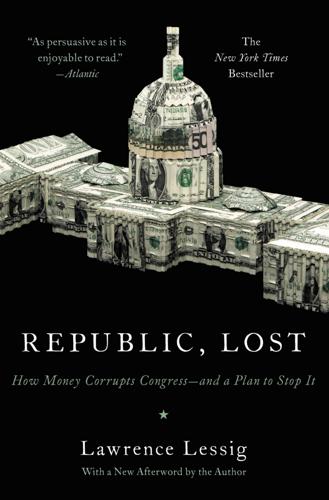
Republic, Lost: How Money Corrupts Congress--And a Plan to Stop It
by
Lawrence Lessig
Published 4 Oct 2011
[It] delivers at least 30 percent and sometimes more than 50 percent of the entire U.S. consumption of products ranging from soaps and detergents to compact discs and pet food; The world’s supply of iron ore is controlled by three firms (Vale, Rio Tinto, BHP Billiton); A few immense firms like Mexico’s Cemex control the world’s supply of cement; Whirlpool’s takeover of Maytag in 2006 gave it control of 50 to 80 percent of U.S. sales of washing machines, dryers, dishwashers and a very strong position in refrigerators; Nike imports up to 86 percent of certain shoe types in the United States—for basketball, for instance—and more than half of many others; As of March 2009, Google had captured 64 percent of all online sear/fony ches in the United States; TSMC and UMC have together captured 60 percent of the world’s demand for semiconductor foundry service—in which a company serves as a sort of printing press for chips that are designed and sold by other firms—and have concentrated that business mainly in one industrial city in Taiwan; Corning has captured a whopping 60 percent share of the business of supplying [LCD glass].13 These are just market concentration statistics.

Shutdown: How COVID Shook the World's Economy
by
Adam Tooze
Published 15 Nov 2021
In April 2020 the ban of the purchase of Huawei equipment came into full effect. Then in May, the U.S. Commerce Department dramatically raised the stakes by requiring a license for anyone using American equipment to produce chips for sale to Huawei. The leading chip foundries in Asia, South Korean Samsung and Taiwanese TSMC, would have to choose between access to state-of-the-art U.S. manufacturing equipment and their giant markets in China.80 To go one step further, in September the Commerce Department widened the sanctions from Huawei to SMIC, China’s leading manufacturer of microchips. At the same time, it exerted pressure on European governments and businesses to cease delivery of essential chip-making equipment to SMIC.81 There was an “unacceptable risk,” the United States declared, that equipment would find its way into the hands of the Chinese military.